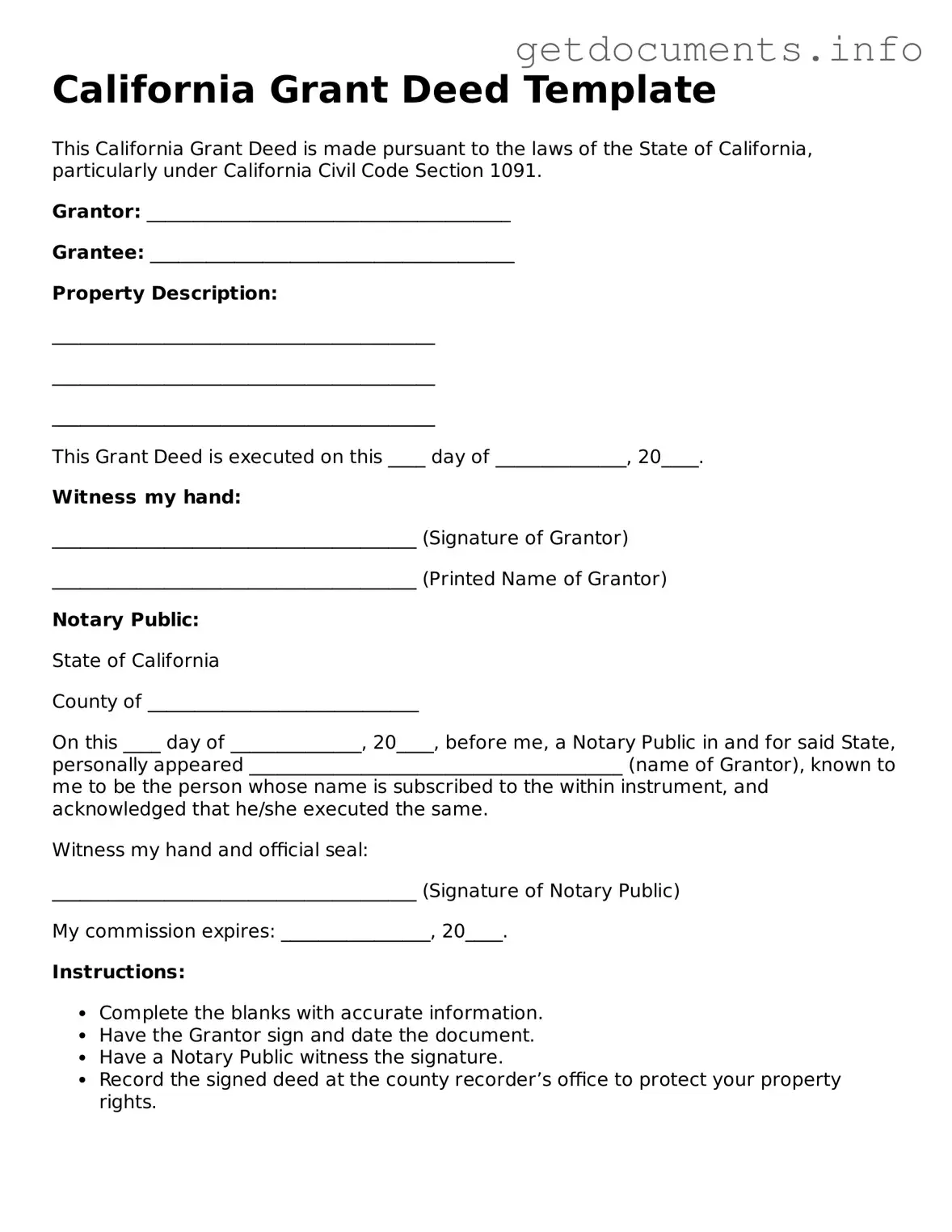In the realm of real estate transactions, the California Deed form plays a pivotal role, serving as a legal instrument that facilitates the transfer of property ownership. This essential document outlines the specifics of the transfer, including the names of the parties involved, a clear description of the property, and the terms under which the transfer occurs. Various types of deeds exist, such as grant deeds and quitclaim deeds, each serving distinct purposes and offering different levels of protection to the parties involved. Additionally, the California Deed form must be executed with particular formalities, including the signature of the grantor and, in some cases, the acknowledgment by a notary public. Understanding the nuances of this form is crucial for anyone engaged in buying or selling property in California, as it not only ensures legal compliance but also safeguards the rights and interests of all parties. Furthermore, the deed becomes a matter of public record once filed with the county recorder, providing transparency and clarity in property ownership. As such, navigating the intricacies of the California Deed form is essential for a smooth and legally sound real estate transaction.
